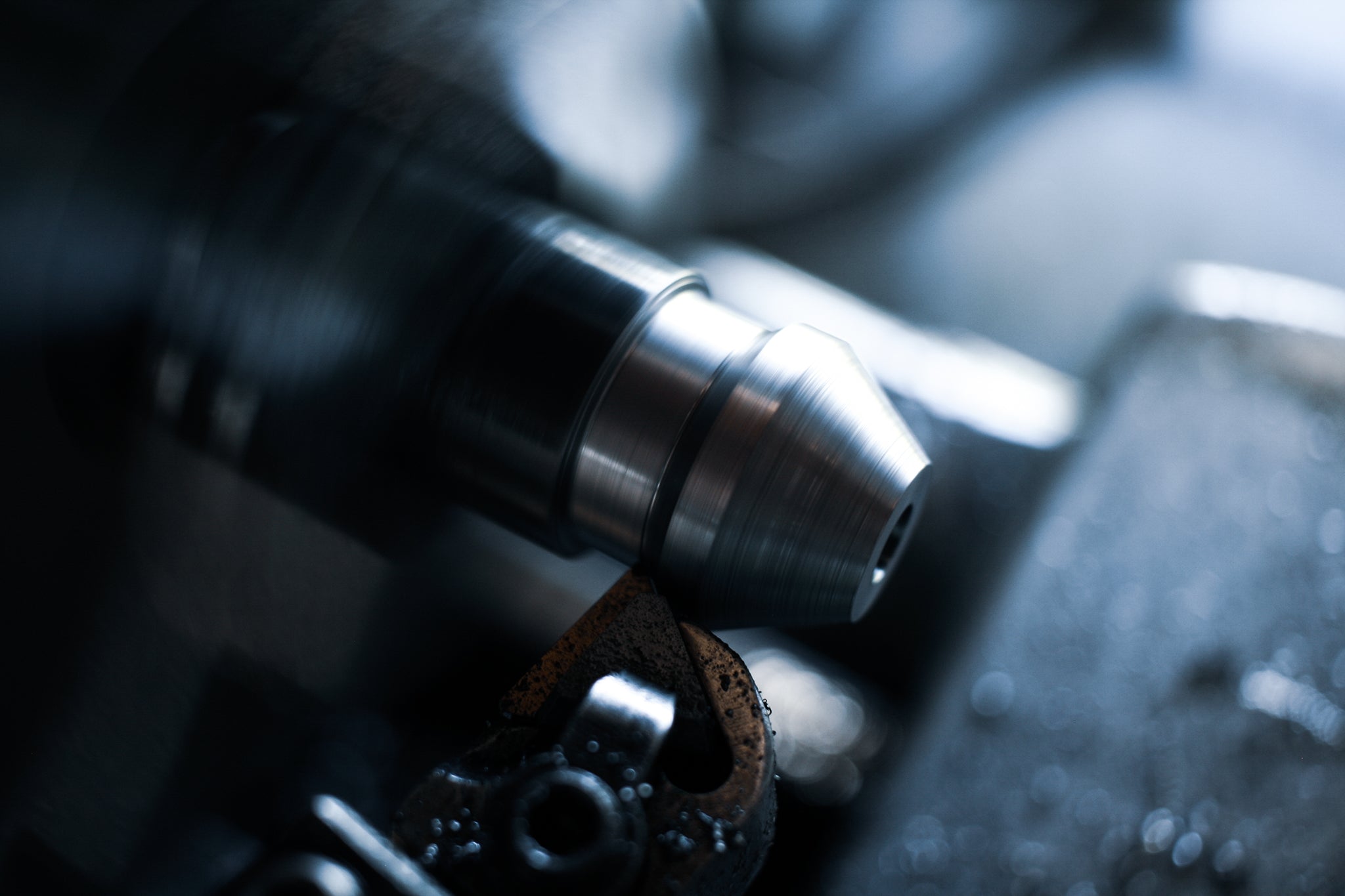Handle making
The handle making process begins with cutting seamless steel pipe (DOM) down to size and then knurling a texture into the handle by using a lathe. The knurling process requires precise pressure and speed to cut a seamless, perfect pattern.
The ends of the handles are shaped in one of two ways. The classic long handle without a hook is shaped by hand and hammer in a die. For the hook option, we precisely machine the end cap on a lathe from solid steel rod stock. The hook is formed using a custom-made jig and welded into place. Both options require a great deal of sanding/blending by hand to achieve the desired finish.
Each style of handle requires the end cap to be welded to the handle and then blended down to a smooth, flush surface. This is done with such precision and care that the weld is virtually impossible to detect. During this process, the diamond grip is also blended for a softer feel.
Next, the handles are crimped and formed on a hydraulic press using the same die used for forming the wok body, to ensure a perfect fit.





Forming
One of the signature design elements a textured brass circle between the wok body and handle. The brass element adds rigidity and beauty; the detail is created by cutting the material to shape and then adding texture by pressing a textured die into the brass circle with our hydraulic press. After adding texture, holes are drilled for rivets and the circle is pressed into a soft radius to fit the wok body.
Each wok begins as a flat disc, cut from a sheet of steel. Our logo is stamped into the bottom of each wok before the pressing process begins. The body of the wok goes through several pressing processes by hand until the right form is achieved. Holes are drilled for the later attachment of the handle to the body.



Assembling and Finishing
Each handle is riveted to the body of the wok using tools specifically made to precisely set each rivet and ensure a secure connection. The wok handles are riveted to the body using a custom die we created just for this task. The rivets were specifically chosen for their strength and size.
Each wok is put under an intense flame to bring it to the desired blue-black color. Finally, the woks are assembled by riveting the handle to the body, and then seasoned using high heat and oil.

